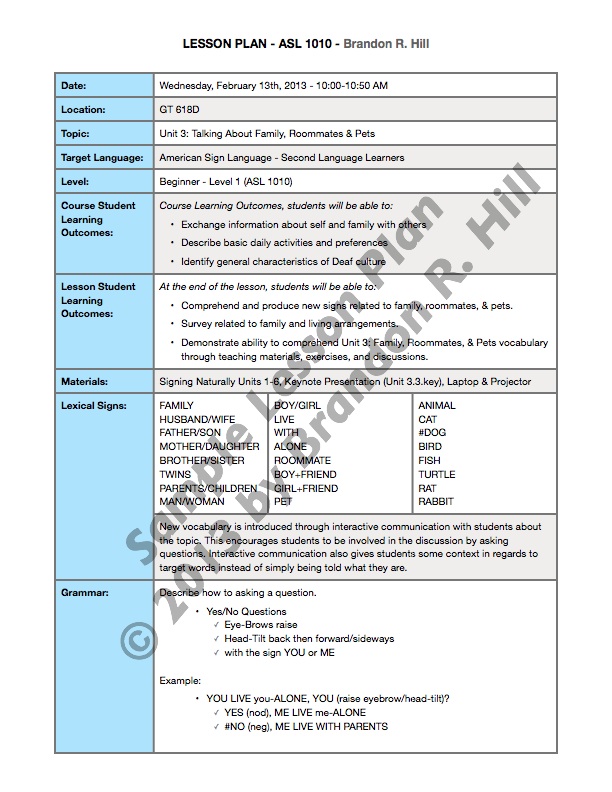Philosophy
[column split=”2″]
[/column]
[column split=”2″ last=”true” ]
I really enjoy stories in ASL, like the one I was just watching. You may have noticed recently that there has been more exposure to ASL and the Deaf community through television shows, movies, and friends and family of Deaf who use sign. Even some Deaf, themselves, have shown more enthusiasm towards ASL and how to educate others. My purpose is to explain how we can take ASL and teach it effectively to others, and I will explain this by sharing with you my teaching philosophy.
My teaching philosophy is a threefold approach consisting of the following:
1. The Natural Approach
2. Content-based Instruction, or for short, CBI
3. Notional-Functional Syllabus, or NFS
[/column]
I believe that applying these three methods of teaching can greatly enhance students’ development of ASL. I will address each of these approaches in the following paragraphs.
The Natural Approach, which is one of Krashen’s theories, explains that students should feel relaxed and at ease in the classroom setting. Providing this type of environment will help facilitate students’ learning. This incorporates the concept of “i+1”, which means that the teacher meets the students where they are, and then adds to their already acquired knowledge. As their knowledge increases, the teacher introduces more new information.
This approach also emphasizes the importance of basic interpersonal communication skills and how to communicate in everyday situations. It does not stress the need to memorize grammatical rules, but focuses heavily on real world knowledge and dialogue. This approach will help them naturally acquire the language. I will show you what this would look like if applied in a classroom:
This classroom set-up is a great example of what a classroom should look like for ASL students. As you can see, students are seated in a half-circle so that all can see each other. This is unlike traditional hearing classrooms where students are seated in rows and visual communication is difficult. That is the reason that the half-circle is such a common seating arrangement in the Deaf world. The teachers can also utilize the floor in the center of the classroom to assure that students can see from all angles, since ASL is a three-dimensional language. This seating arrangement is highly recommended, as it allows students full access to ASL.
Content-based Instruction involves introducing a subject and the required language to discuss the subject. For example, you can introduce a topic related to culture and then the appropriate signs needed for comprehension, and ultimately language acquisition.
You can incorporate technology in your discussion by sharing content such as current events in the news, media, vlogs, comic strips, stories, poetry, etc. All of these things can be applied to CBI.
Notational-Functional Syllabus involves discussing everyday topics and dialogue in the classroom. This approach can be done in three ways, the first of which is role play. The teacher explains a certain situation and the students learn how to communicate their way through it. Second, the students can simply practice conversing with their classmates. This involves everyday dialogue and asking questions to learn more about each other, which will help them develop basic communication skills. Third, focusing on grammar, specifically non-manual markers such as facial expression, helps students learn an important part of ASL structure. Because hearing students are often not used to making exaggerated facial expressions, it can be beneficial to practice it together so they can become more comfortable doing so. These three practices are important for the development of ASL and can be helpful in their assignments and curriculum.
These three approaches, if applied, will greatly impact students and increase their ability to learn ASL. That is my teaching philosophy.



Recent Comments